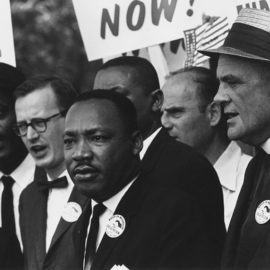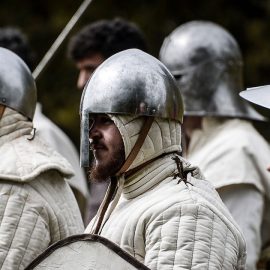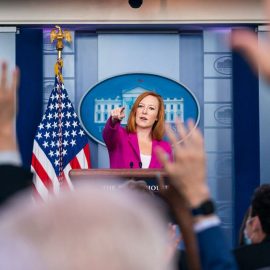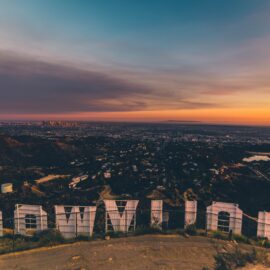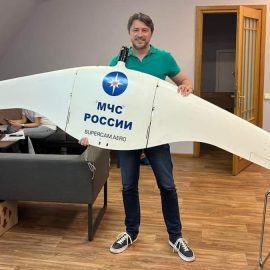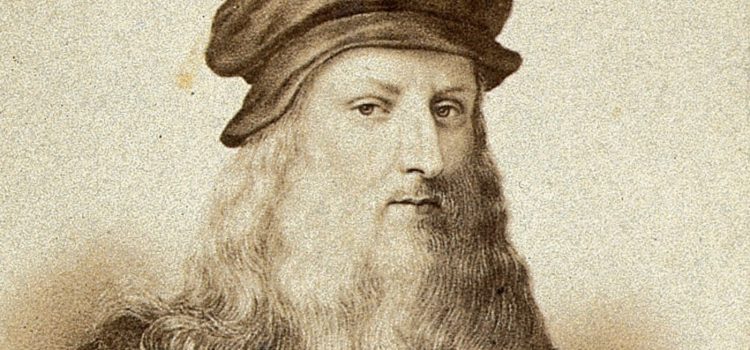
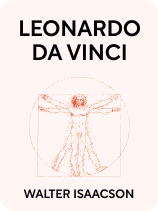
This article is an excerpt from the Shortform book guide to "Leonardo da Vinci" by Walter Isaacson. Shortform has the world's best summaries and analyses of books you should be reading.
Like this article? Sign up for a free trial here.
What is Leonardo da Vinci’s life story? What places did he spend his life in?
Leonardo da Vinci spent his life in many places—Vinci, Florence, Milan, Rome, and France. These places influenced his art and his life story.
Below, we’ll explore his life from his birth in Vinci in 1452 to his death in France in 1519, as described in Walter Isaacson’s biography of the polymath.
Vinci (1452-1464)
Leonardo da Vinci’s life story begins with his birth in Vinci, Italy, on April 15, 1452. He lived there for the first 12 years of his life, alternating between his mother’s home and his paternal grandparent’s home. (Shortform note: Historians say that Leonardo was more specifically born in Anchiano, a village near the town of Vinci.)
Florence (1464-1482)
In 1464, Leonardo began living with his father in Florence, the perfect setting for young Leonardo’s development. Isaacson explains that the trading city was a melting pot of new ideas. Its intellectuals believed in the ideals of Renaissance humanism, especially in finding happiness through knowledge. The growing upper class was keen to display their wealth through their arts patronage, giving artists opportunities to create and collaborate.
(Shortform note: Florence is called “the cradle of the Renaissance” because the cultural revolution was “born” there. Florentine authors, such as Dante Alighieri, paved the way by exploring and writing about these ideas in Italian, rather than Latin, bringing them closer to the general population.)
Milan (1482-1499)
Lorenzo de’ Medici sent Leonardo to Milan as a diplomatic envoy, opening a new chapter in Leonardo’s life. Lorenzo often leveraged Florence’s cultural capital in his diplomatic relations with the other Italian city-states. On this occasion, Isaacson argues that Lorenzo leveraged Leonardo’s skills as a gift to the Duke of Milan, Ludovico Sforza.
Isaacson explains that Milan offered Leonardo many advantages. First, it was larger than Florence but it didn’t have as many accomplished artists, so he would have less competition. Second, Milan’s duke was filling his court with artists, engineers, and philosophers, so Leonardo had a source of employment and the opportunity to collaborate with other intellectuals.
Florence, Again (1500-1506)
Leonardo returned to a different Florence from the one he had known. The city had gone through a conservative period and lost the vibrancy of its culture and economy. However, the Florentines were closing that chapter and returning to their roots. Isaacson argues that, at first, Leonardo fit well into this cultural context. He symbolized what Florence was striving to return to, and he played the part of a stylish eccentric.
(Shortform note: The cultural changes in Florence were the result of Girolamo Savonarola, a friar who preached against corruption in the government and church. When the King of France invaded Florence in 1494, Savonarola negotiated on behalf of Florence and became the leader of the city-state. He purged the Florentine government, openly criticized the Pope and the Church, and organized the “burning of the vanities,” where people burned their books, jewelry, and any other object that enticed them to sin. Eventually, political enemies (including the Pope) succeeded in removing Savonarola from leadership and he was killed in 1498.)
Milan, Again (1506-1513)
In 1506, Leonardo returned to Milan to resolve a dispute over a painting, but he stayed there after resolving it. Isaacson argues that he stayed because he had no interest in returning to Florence and the visibility he had there as an artist. To appease the Florentine government, Leonardo asked the French rulers of Milan to intervene on his behalf so he could stay in Milan. Compared to Florence, Milan was a vibrant city that offered Leonardo more opportunities, and Isaacson claims he stood out less than in small-town Florence. In Milan, he also had the favor of the King of France and the French governor of Milan.
(Shortform note: Leonardo’s preference for Milan is repaid by how the city treasures his legacy. In 1872, the city built a statue of Leonardo with a flowing beard and contemplative brow. Some blocks away, a sculptural rendition of Leonardo’s maps of Milan sits in the middle of the old city.)
Rome (1513-1516)
In 1513, after a few years with the Melzi family, Leonardo found new patrons who took him to Rome. Giovanni de’ Medici (of the Florence Medici) had become Pope Leo X and his court was looking for artists and architects. (Shortform note: Pope Leo X has many claims to fame, besides employing Leonardo. The Renaissance flourished in Rome under his watch, with Raphael, Michelangelo, and many other artists working for him. But the pope enjoyed many earthly pleasures other than art, and his ostentation of wealth, corruption, and promiscuity helped diminish the Catholic Church’s leadership, opening it up to a period of Reformation by leaders such as Martin Luther.)
France (1516-1519)
In 1516, Leonardo and Francesco moved to France. Joining them was Battista de Vilanis, a new servant Leonardo had become attached to, according to Isaacson. Along the way, the group separated from Salai (Leonardo’s apprentice and muse). Salai moved to Leonardo’s estate in Milan (a vineyard that Ludovico Sforza had given him as payment for some work), where Salai later built a house. He would visit Leonardo a few times in France, but they never again lived together. (Shortform note: Ludovico gave Leonardo the vineyard as payment for “The Last Supper” and it was Leonardo’s confirmation of having become a land-owning citizen of Milano.)
Leonardo’s Death
At some point before October of 1517, Leonardo suffered a stroke that left his right hand incapacitated. Before his death, Leonardo wrote his will. Isaacson reports that he divided his property among Francesco, his half-brothers, Battista, Salai, and his cook. (Shortform note: Isaacson states that Leonardo wrote his will in 1518, but most other sources claim he wrote it in 1519, days before his death.) Leonardo da Vinci’s life story ends with his death in 1519, days after turning 67. (Shortform note: The cause of death is unknown, but it’s possible he had another stroke.)

———End of Preview———
Like what you just read? Read the rest of the world's best book summary and analysis of Walter Isaacson's "Leonardo da Vinci" at Shortform.
Here's what you'll find in our full Leonardo da Vinci summary:
- A detailed look into the life, accomplishments, and struggles of Leonardo da Vinci
- Lessons from his life and work that you can apply to your own life
- What set Leonardo apart from other artists at the time

